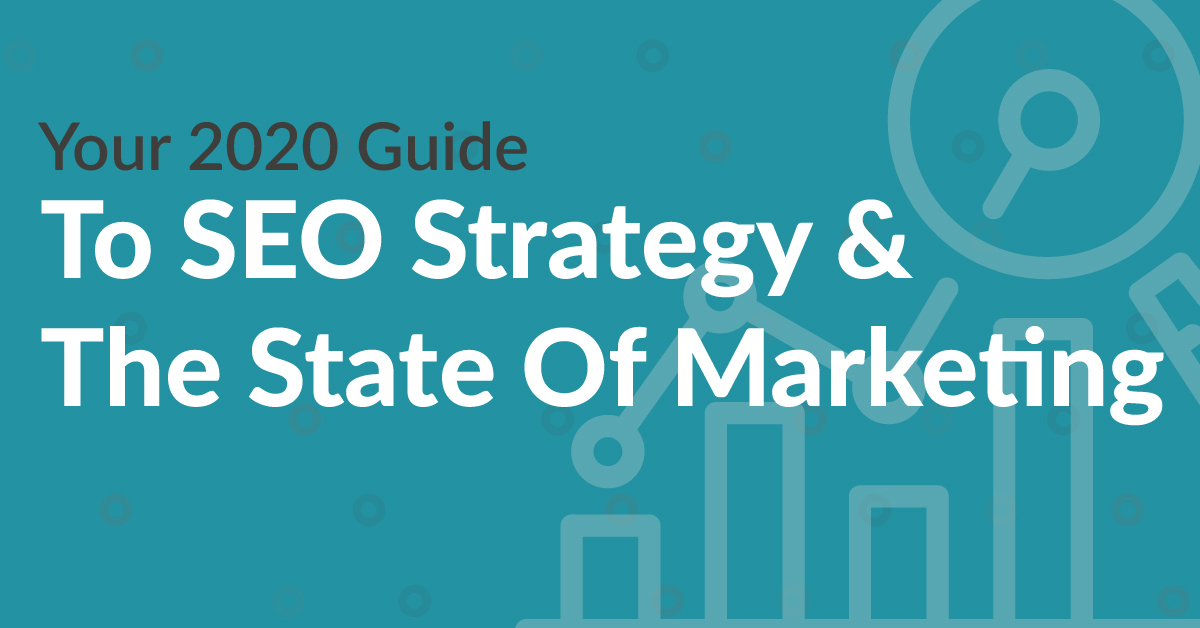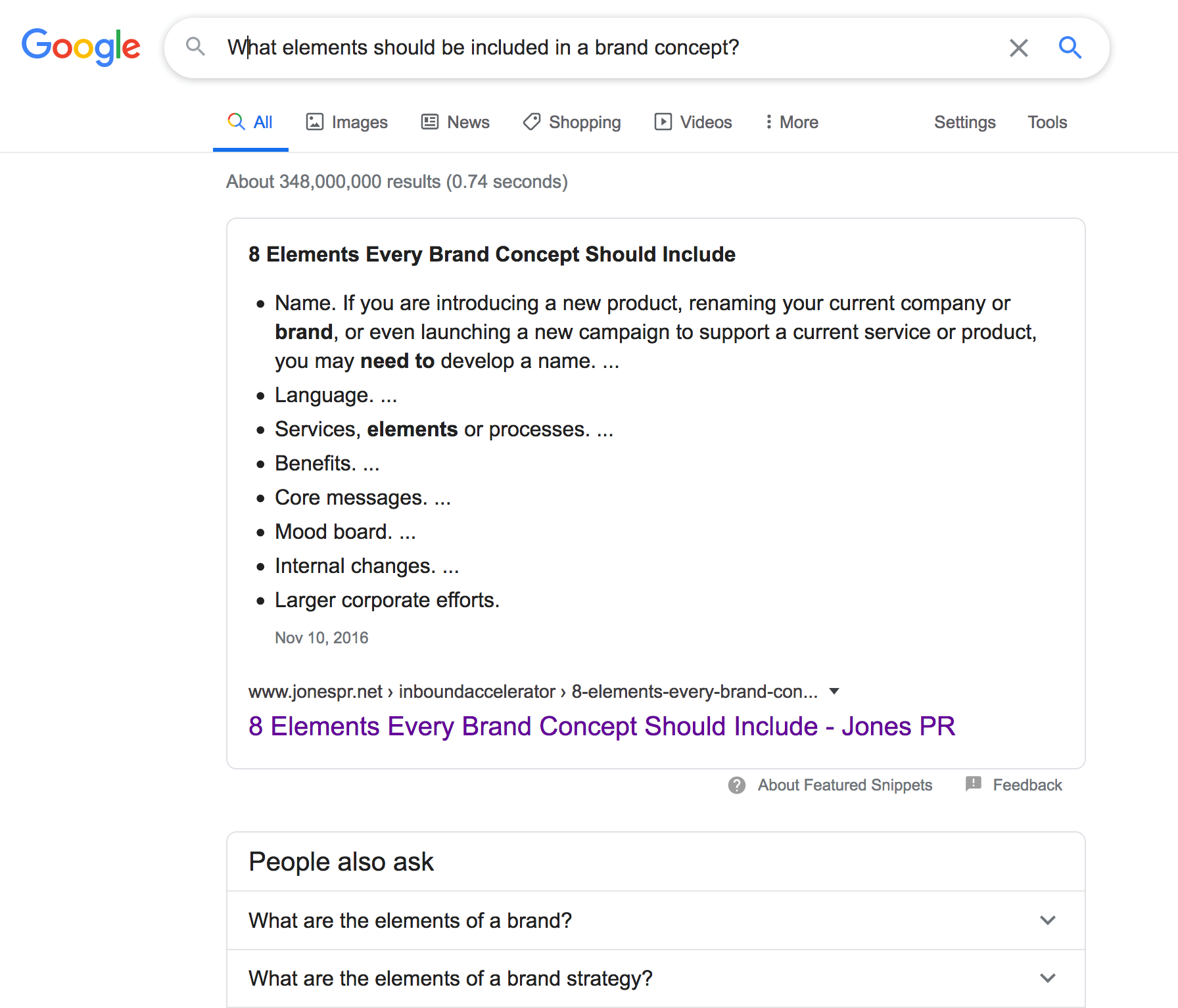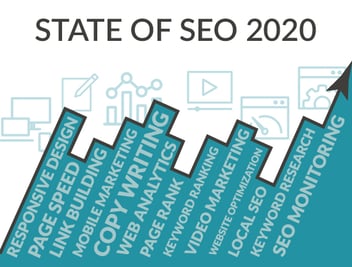Your 2020 Guide To SEO Strategy & The State Of Marketing
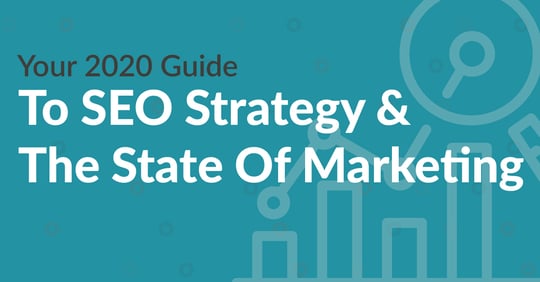
For all the talk that has circulated about search engine optimization over the last 20 years, I was surprised to read a statistic included in a recent survey of more than 3,400 marketers around the world by our partners at HubSpot.
According to that survey, fewer than 65 percent of marketers actively invest time in SEO. Maybe it is the result of an interpretation of the question, and they don’t consider time spent in content development as an investment in SEO. Or they only answered “yes” if they had someone on staff or on contract dedicated specifically to SEO. Either way, any marketer and company relying on a website for lead generation and sales needs to invest in SEO. And content absolutely is a part of it.
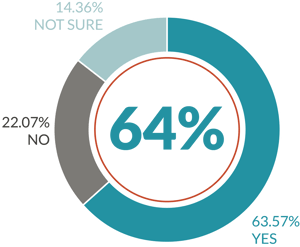
If you want to see more of the SEO portion of the survey results, download The State of Marketing 2020: SEO Strategy mini-report is available as a free download here. And I have some recommendations to offer for your SEO efforts moving forward, based on the report and our own experience.
(Find more survey results in other mini-reports in the Inbound Marketing Learning Library and read our blog posts with 2020 recommendations on content marketing strategy and website strategy.)
It really isn’t surprising that so many of the recommendations that both we here at JONES, and our partners at HubSpot, have to offer for the multiple strategies outlined in the report come back to a central concept: Answer your customers’ questions. I talked about it in my post on Web Strategy based on this report, and in the Content Strategy post. If you haven’t read those blog posts, I suggest you do after finishing this one. All of your strategies work together, and this one idea of providing answers to your customers’ questions is at the core of them all.
 “In SEO, everything is anchored in user experience. And that experience hinges on providing the information that a person searches for, in a way that search engines can identify.” — Matthew Howells-Barby, Sr. Director of Acquisition, HubSpot
“In SEO, everything is anchored in user experience. And that experience hinges on providing the information that a person searches for, in a way that search engines can identify.” — Matthew Howells-Barby, Sr. Director of Acquisition, HubSpot
Along with the importance of content that answers questions—which can give you a better chance of scoring Google’s “featured snippets” results—you still need to spend time on the more granular aspects of SEO: page speed, keywords, and alt text.
Optimizing content for your SEO strategy
According to HubSpot’s survey, about half of the marketers out there are actively trying to rank for Google featured snippets—those results that pop up with the answer when a searcher asks a question.
Featured snippets give searchers instant answers to questions, using Google’s algorithms to identify what webpage best answers those questions. Nearly 1 in 10 searches performed today are in the form of a question. (Source)
Many other searches begin with “how to.” Just think how often in the last few weeks you have typed that phrase into a search bar, from “how to make cold brew coffee” to “how to replace bicycle tires” or “how to improve SERP rankings.” And when you do, chances are that the featured snippets came from pages that spell out the instructions, step by step, or have a video showing the process.
According to Neil Patel, there are three major types of featured snippets: paragraphs, lists, and tables. When you provide an easy-to-skim bulleted list or a short concise definition or set of instructions in a single paragraph, your content is more likely to be chosen to answer searchers’ questions.
You can include this type of answer-optimized content in many places on your website, from your business blog to product pages and, obviously, FAQ pages.
Using the blog post from the screenshot above as an example, we started the post with a bulleted list of the 8 elements of a brand concept. Further down in the post were subheads and sections for each element, but having that complete bulleted list at the beginning provided an opportunity for Google to grab that segment as an answer to the question: What are the elements of a brand concept?
This style of writing is just as helpful for readers as it is for search engines. It provides them with an opportunity to skim the list and then scroll down through the post to the specific information they are looking for.
When you write for readers, you boost your search results because the algorithms base much of their judgment of the quality of your content on signals such as time on page, bounce rate and backlinks, all of which improve when you create your content in ways that make it easy for visitors to use and find what they need.
Technical elements to optimize for your SEO strategy
While content is key, there are still plenty of little details and technical elements you need to pay attention to when optimizing your SEO strategy.
Keywords do still matter, though they should be used appropriately to let both readers and search engine crawlers know what the content is about. Do include keywords in headings where it makes sense. Include them in alt text for images in ways that also address accessibility issues on your website (read more about that here). Spend time thinking about the phrases and questions your customers actually use when searching, and then create content that addresses them. You can also sketch out how you will use keywords in other parts of your webpage using our most popular free resource: On-Page SEO Planning Template.
Page loading speed is paramount, especially when it comes to mobile connections. It is actually the top tactic cited by marketers in HubSpot’s survey for improving search performance. Slow loading speeds increase bounce rates and decrease your search rankings. Neil Patel goes into detail in this blog post about how to test your page loading speed and how to make changes to your website that will improve it.
“Keep focusing on page speed. It matters for users and for bots and it’s not going away.” — Jackie Chu, SEO Lead, Dropbox
Following very closely behind page speed optimization in the survey, as tactics marketers are using to improve search performance, were optimizing for mobile and localization. More than half of all internet traffic, and 60 percent of Google searches, involves mobile devices today. (Source)
Couple that with these facts (Source):
- 97 percent of consumers search online for local businesses.
- 46 percent of all Google searches are local.
Localization means going back to our keyword discussion, and the topic of content development, to ensure your SEO efforts include highlighting the keywords that will help customers connect where they are with where you are, whether you have a single location or are designing a website that can adapt so that searchers find the information needed for a specific location near them.
Your ongoing SEO strategy will always need to adapt to changing algorithms and processes used by Google and other search engines, but if you start with the basics of high-quality content that provides answers, on a framework that offers both bots and users a quick, positive experience, you’ll have a leg up on the competition.
Find more about how your fellow marketers are using SEO, and how they measure their success, in The State of Marketing 2020: SEO Strategy. This report includes survey answers from more than 3,400 marketers around the world in B2B, B2C, and non-profit organizations about their SEO strategies. The survey also touched on many other topics, which we are publishing in additional mini-reports, including content marketing, website strategies<link to website report>, email and market research. Find the reports in our Inbound Marketing Learning Library, and additional recommendations in these blog posts:
- Your 2020 Guide To Content Marketing Strategy & The State Of Marketing
- Your 2020 Guide To Website Strategy & The State Of Marketing
Want more personalized guidance for your 2021 online marketing strategies? I’d be glad to chat with you about the insights in this report and what they mean for your website, SEO and overall marketing strategy. Schedule a no-obligation consultation with me now.
-1.png?width=1652&height=294&name=Jones(RGB)-1.png)

